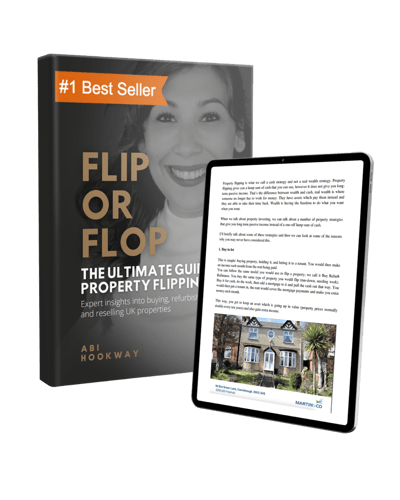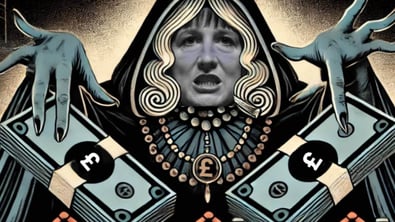When an individual is buying a home over a certain value, then stamp duty needs to be paid.
In the mini-budget announced by the chancellor on the 23rd September, some changes were made to the thresholds at which Stamp Duty Land Tax (SDLT) is chargeable.
What are the stamp duty changes and what will they mean for property investors? This blog post investigates.
What is stamp duty?
Stamp duty is the tax paid when a property or land is purchased.
Specifically an individual is liable to pay stamp duty if they:
- Buy a home outright or with a mortgage
- Purchase property or land that is worth above a certain amount
- Buy a freehold or leasehold property
- Buy a property through a shared ownership scheme
- Are given land or property in exchange for payment, such as if you take out a mortgage or buy a share in a house.
The name for stamp duty in each of the UK nations changes, depending on where it is:
- In England and Northern Ireland, it is known as Stamp Duty Land Tax
- In Scotland, it is known as Land and Building Transaction Tax
- In Wales, it is known as Land Transaction Tax
Stamp duty was introduced in the 1600’s but the current system for house purchases was largely introduced in the 1950s.
Notable historic rates include:
1984-1991:
| Property Price |
SDLT Rate |
| Up to £30,000 |
0% |
| Over £30,000 |
1% |
1991-1992:
Chancellor Nigel Lawson increased the threshold during the recession to stimulate demand (before readjusting back to the original rate).
| Property Price |
SDLT Rate |
| Up to £250,000 |
0% |
| Over £250,000 |
1% |
1993-1997:
| Property Price |
SDLT Rate |
| Up to £60,000 |
0% |
| Over £60,000 |
1% |
1997-1998:
| Property Price |
SDLT Rate |
| Up to £60,000 |
0% |
| £60,001 – £250,000 |
1% |
| £250,001 – £500,000 |
1.5% |
| Over £500,000 |
2% |
From 1st October 2021:
Having adjusted the rate for the Covid-19 pandemic, all discounts ended on 30th September 2021. First time buyers would pay no tax on homes costing up to £300,000 and 5% on the next £200,000. Second homeowners continue to pay an additional 3% on properties costing over £40,000.
| Property Price |
SDLT Rate |
| Up to £125,000 |
0% |
| £125,001 – £250,000 |
2% |
| £250,001 – £925,000 |
5% |
| £925,001 – £1,500,000 |
10% |
| Over £1,500,000 |
12% |
What are the Stamp Duty changes in autumn 2022?
Chancellor Kwasi Kwarteng introduced a few changes to stamp duty in the mini budget.
The first change is increasing the price from which SDLT becomes payable. This is from £125,000 to £250,000 – so for all purchase price is less than £250,000 there is now no SDLT to pay at all.
The new rates are:
| Property Price |
SDLT Rate |
| Up to £250,000 |
0% |
| £250,001 – £925,000 |
5% |
| £925,001 – £1,500,000 |
10% |
| Over £1,500,000 |
12% |
This means that for someone buying a residential property at £450,000, this means they will now pay £10,000 in SDLT compared to £12,500.
These rates are different for first-time buyers, companies, overseas buyers and people buying a second or subsequent property, but they will benefit from the changes too.
What do the changes mean for first time buyers?
For first-time buyers the stamp duty changes mean the following.
No SDLT is payable where the purchase price is up to £425,000 (previously this was the case up to £300,000).
First-time buyers can also claim First Time Buyer Relief on all purchases of a main residence up to a maximum purchase price of £625,000 (up from £500,000).
For example, under the old rules a first time buyer paying £450,000 for their home would pay £7,500 in SDLT. This is now reduced to £1,250.
What does the stamp duty changes mean for second homes and buy to let property?
There are also new rates for people buying a second home or a buy to let.
These new rates are:
| Property Price |
Second Home / Buy To Let Rate |
| Up to £250,000 |
3% |
| £250,001 – £925,000 |
8% |
| £925,001 – £1,500,000 |
13% |
| Over £1,500,000 |
15% |
There is also a 2% Stamp Duty Tax for overseas buyers purchasing residential property in England and Northern Ireland in 2021. This applies to non-resident buyers regardless of the type of buyer (company or individual).
There are also different rates and calculations for corporate bodies, buying six or more residential properties in one transaction, shared ownership properties, multiple purchases or transfers between the same buyer and seller, companies and trusts buying residential activities.
How is stamp duty paid?
A stamp duty return must be sent to HMRC two weeks after completing the purchase. It is usually sorted by the solicitor or conveyancer on the buyer’s behalf.
Any costs will be added to the solicitor’s fees and they will also claim any relief the buyer is eligible for.
Alternatively, the individual can also file a return.
What do the stamp duty changes mean for property investors?
The key changes that property investors need to be aware of is:
- The changes only apply to England and Northern Ireland, as Scotland and Wales have their own land taxes
- The threshold above which buy-to-let investors pay 3% have increased to up to £250,000 (an increase from the previous 3% bracket up to £125,000)
- People who are living in the property that they are buying will not have to pay any stamp duty tax on anything paid up to £250,000
- First-time buyers wouldn’t have to pay any stamp duty on any property worth less than £425,000
- The maximum amount that a first time buyer can pay while still being eligible for First Time Buyers Relief has increased to £625,000
For more information call us on 01302 897131 or email office@touchstoneeducation.co.uk.












